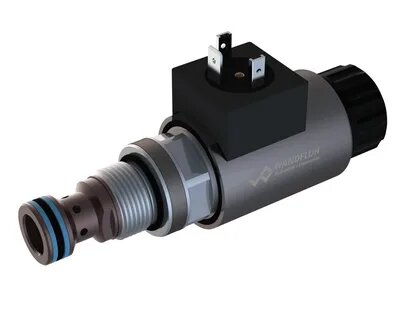It is common for poppet valves to be used in air and hydraulic systems. When they are not being used, they are usually controlled by solenoids. They can be normally closed or open when not in use.
Besides checking the engine valves that only allow one-way flow and relief valves that protect against too much pressure, they can also be used for other things. They are usually found next to spool valves in pneumatic and hydraulic systems.
Types of Poppet valves
The poppet valves are split into three parts based on how the valves are made.
- Monometallic engine valve
- Bimetallic engine valve
- Hollow engine valve
1. Monometallic Engine Valve
It’s called a monometallic engine valve because it's made of the same thing from its stem to its head. They are very good at resisting heat and have excellent anti-friction qualities.
They are very good at metalwork and can't be corroded. These exhaust valves can be made out of chromium, manganese, and stainless steel, and they can be used.
2. Bimetallic Engine Valve
In a Bimetallic engine valve, both the head and the stem are handmade. They are joined together by friction welding.
Most of the time, austenitic steel is used for the head of the valve and martensitic steel is used for the stem. Each of these materials has important mechanical properties used for different things.
The austenitic steel is good at resisting corrosion and heat, which is important for the cylinder block.
3. Hollow Engine Valve
Sodium metal is used to fill the hollow engine valves' hollow cavity. Sodium metal turns into a liquid when the temperature of the valve gets hotter, so it starts to change into water.
Because of this, heat can better move from the austenitic steelhead to the martensitic steel stem. Because of this, it is used in modern cars.
Poppet Valve Applications
Poppet valves are often used with single-acting cylinders to hold and lower loads. They are used in positive displacement pumps to remove water from the pump. As relief valves in air tanks, they let the air out when it gets too much. A poppet valve is a simple way to stop flow reversal in a fluid circuit.
Some poppet check valves let water flow backward. A check valve allows fluid into the cylinder on a hydraulic lift while maintaining the piston's position. This means that fluid needs to go through the valve to lower the load. Outside pressure raises the poppet off its seat, allowing fluid to flow back into the valve through the outlet.
Advantages of Poppet Valves
It is better to use poppet valves than other flow control valves. Engine valve manufacturer in Rajkot has a high flow rate, no gaps, quick response times, low friction that lasts for a long time, low contamination damage because of its shape, and costs less. This makes the poppet valve important when very precise control is needed over fluid flow, so it is essential to have it.

Comments
Post a Comment